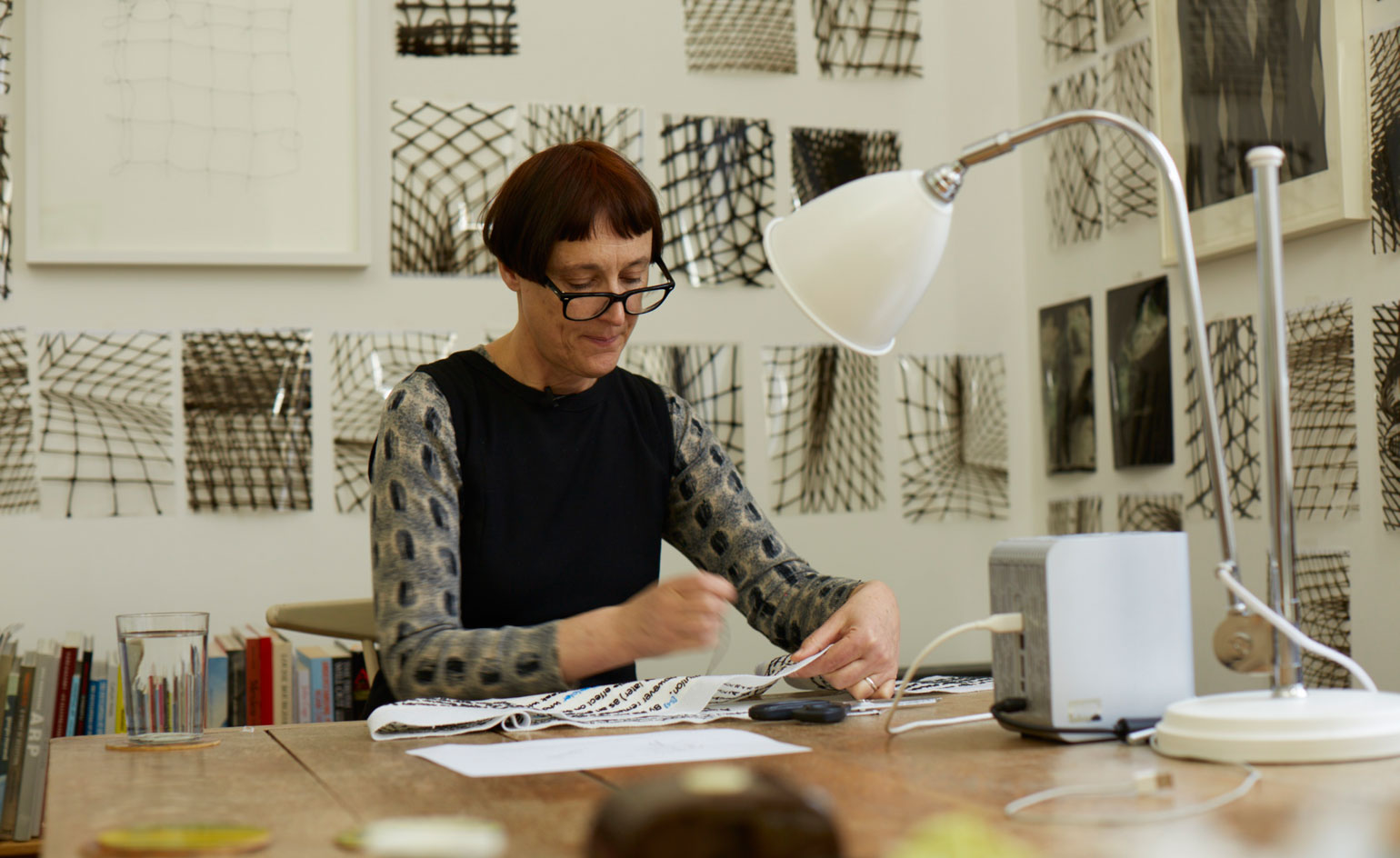
In light of increasingly commonplace violations of individual and civil liberties, it can feel wrong to support the Magna Carta’s status as a symbol of the preservation of fundamental freedoms.
But it's this continuing dialogue and debate that Cornelia Parker seeks to harness in her latest work, Magna Carta (An Embroidery), currently on display at the British Library in London. A major new artwork in the artist's storied catalogue, the finished piece is an intricate textile work that replicates the entire Wikipedia article on the Magna Carta – the historical dictum outlining England's constitutional practice – as it appeared on the document's anniversary.
Topping out at nearly 13 metres long, it was painstakingly stitched by over 200 pairs of hands, each with individual ties to the document’s themes of civil liberty (including almost 40 prisoners). In addition to a rich assortment of peers, campaigners and lawyers, diverse public figures – from Liberty director Shami Chakrabarti and Baroness Doreen Lawrence to Brian Eno and Jarvis Cocker – also lent their needlework skills to the project. Incredibly, Parker arranged for Edward Snowden and Julian Assange to contribute words ('freedom' and 'liberty', respectively) from their exiles, lending the finished work an uncommon resonance and gravitas.
'I wanted the embroidery to raise questions about where we are with the principles laid down in the Magna Carta,' Parker says, 'and about the challenges to all kinds of freedoms that we face in the digital age.' Fine Cell Work, a social enterprise that trains inmates in needlework skills, dispatched the lion’s share of the tapestry to various prisons, while the most intricate embroidery was reserved for elite institutions like Hand & Lock, the Embroiderers’ Guild and the Royal School of Needlework.
But why Wikipedia? 'Like a Wikipedia article,' Parker explains, 'this embroidery is multi-authored and full of many different voices.' The process of reflection and review that the open source encyclopedia encourages is also a digital parallel to the continuous re-examination of the principal tenets of liberty that the Magna Carta demands.
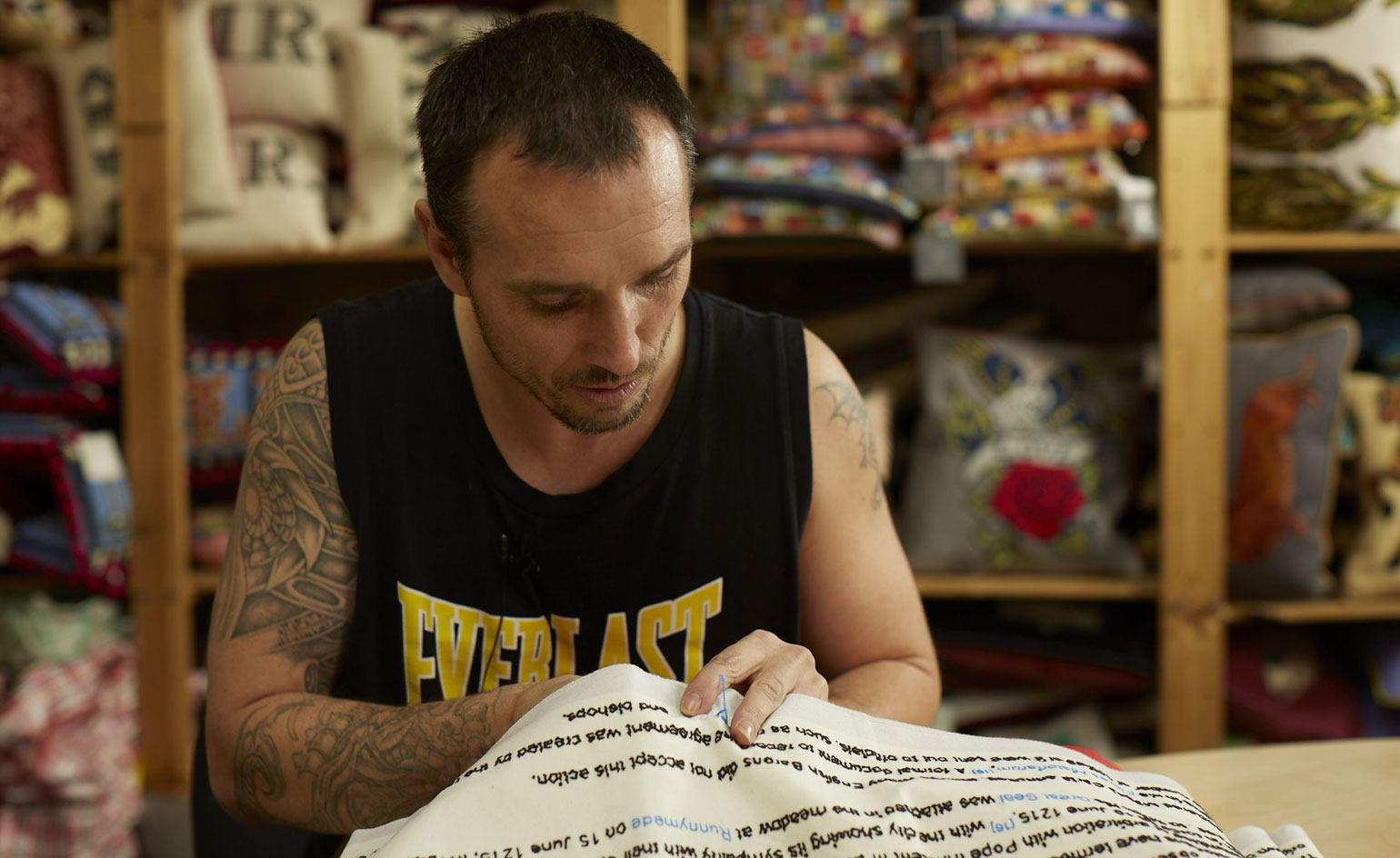
The piece was stitched by over 200 people, many of whom had a direct connection to the work's overarching theme of civil liberty. Pictured: Chris, a member of Fine Cell Work (a social enterprise that teaches incarcerated individuals needlework skills), was one of nearly 40 prisoners who worked on the project.
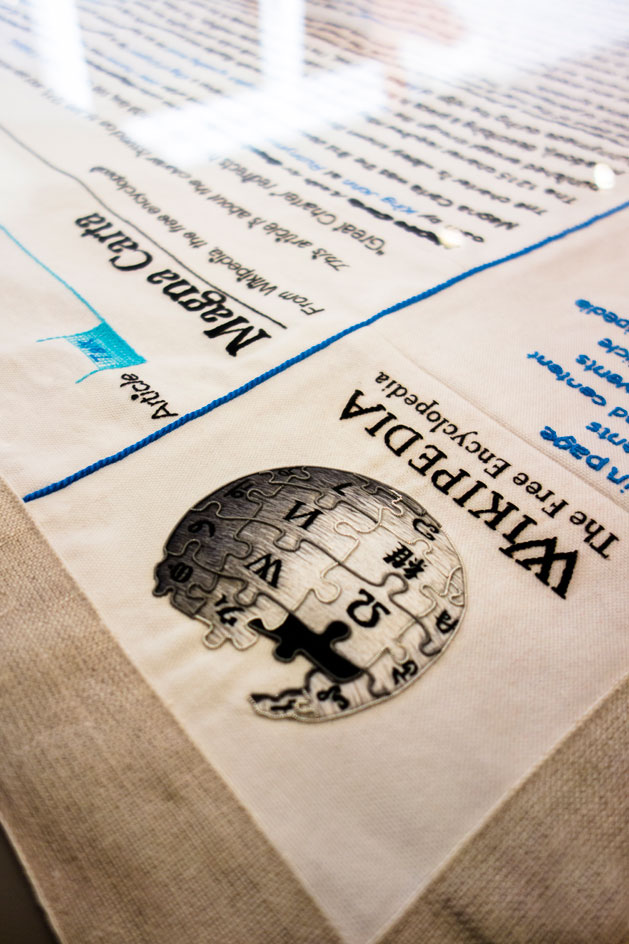
This recreation of the Wikipedia logo was stitched by Janika Mägi of the embroidery institution Hand & Lock.
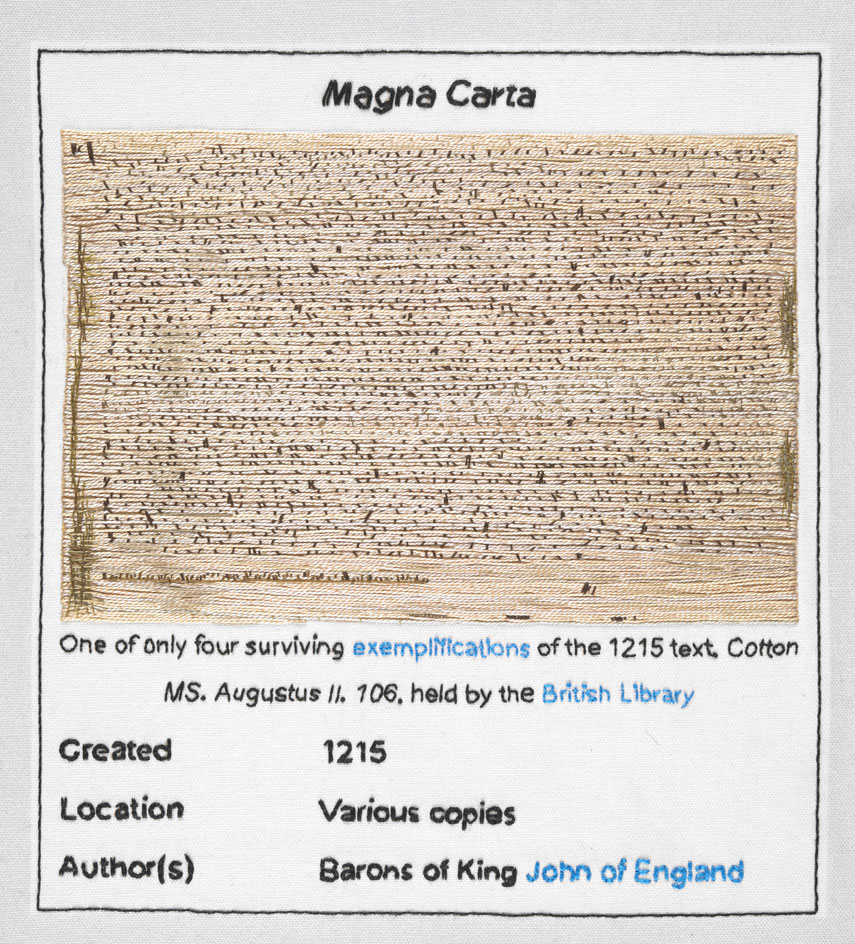
A detail of only one of four surviving fragments of the 1215 Magna Carta, stitched by Pam Keeling of the Embroiderers' Guild (East Midland Region).
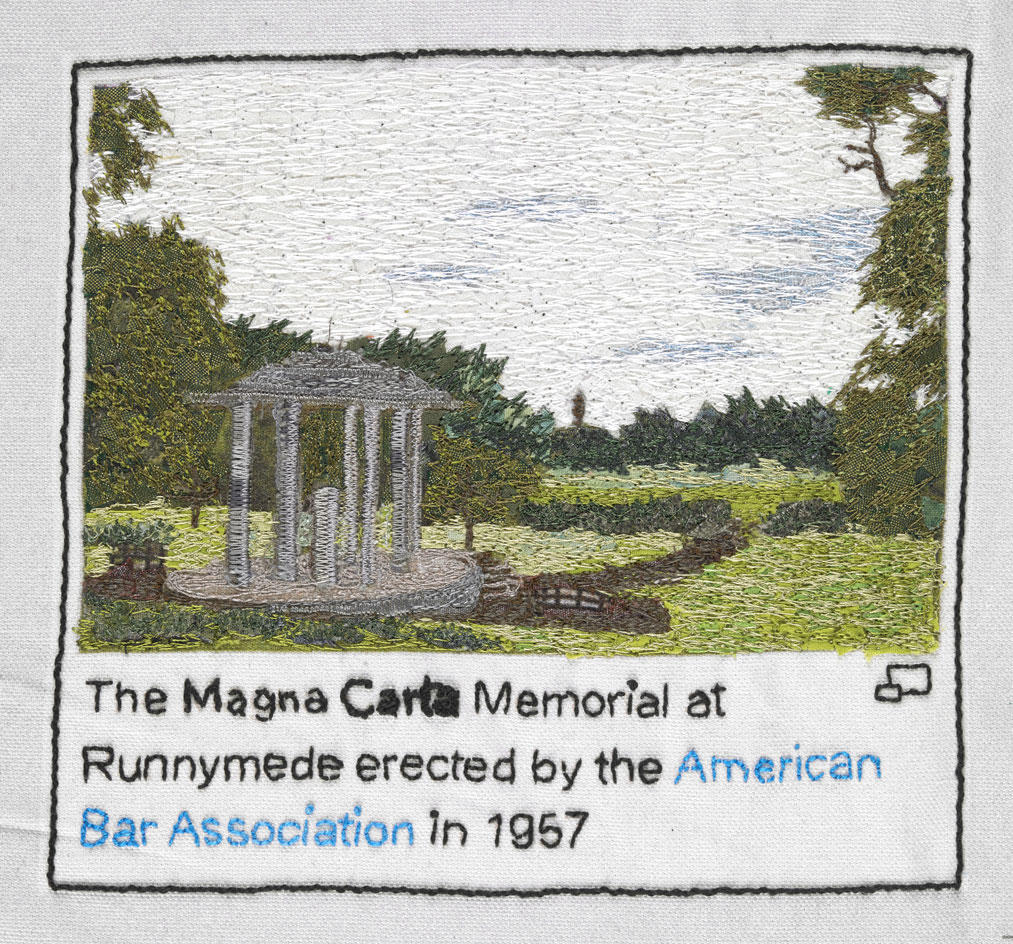
Sian Kibblewhite of the Embroiderers' Guild (West Midlands Region) created this vista of the Magna Carta memorial, located at the water-meadow of Runnymede in Windsor

The ubiquitous Wikipedia link panel was stitched by Kate Barlow, Angela Bishop, Rachel Doyle, Belinda Egginton, Amanda Ewing, Susan Kay-Williams and Annalee Levin, of the Royal School of Needlework.

Wikipedia links, stitched by Lorna Pound of the Embroiderers’ Guild (West Midlands Region)

Magna Carta (An Embroidery) stretches to almost 13 metres long in its completed form. Pictured: Parker displays a fragment of the piece.
Address
British Library
96 Euston Road
London, NW1 2DB
Receive our daily digest of inspiration, escapism and design stories from around the world direct to your inbox.
-
 Gorden Wagener leaves the helm of Mercedes-Benz design after 28 years with the company
Gorden Wagener leaves the helm of Mercedes-Benz design after 28 years with the companyThe German designer is stepping down from the role of chief design officer at Mercedes-Benz. We look back at his influence and impact on the world of automotive and luxury design
-
 These Christmas cards sent by 20th-century architects tell their own stories
These Christmas cards sent by 20th-century architects tell their own storiesHandcrafted holiday greetings reveal the personal side of architecture and design legends such as Charles and Ray Eames, Frank Lloyd Wright and Ludwig Mies van der Rohe
-
 Lucila Safdie’s ‘feminine and surreal’ womenswear is inspired by teenage bedrooms and internet lore
Lucila Safdie’s ‘feminine and surreal’ womenswear is inspired by teenage bedrooms and internet loreThe latest in our Uprising series, the Central Saint Martins graduate is honing a pastel-shaded vision rooted in depictions of girlhood in film and literature